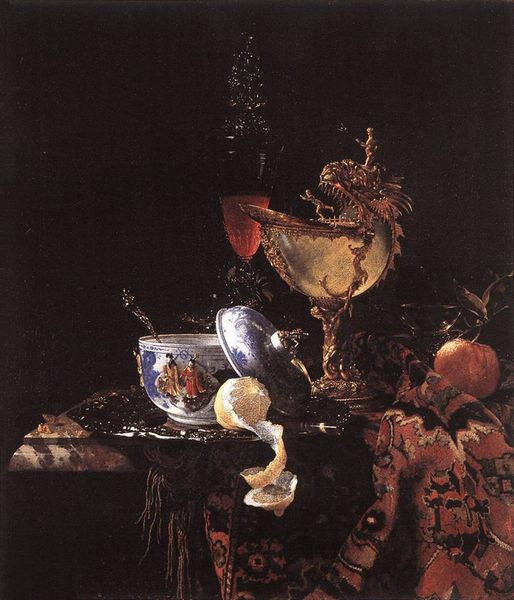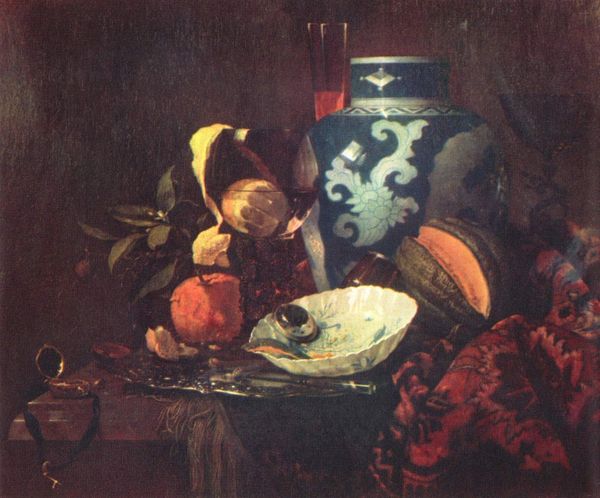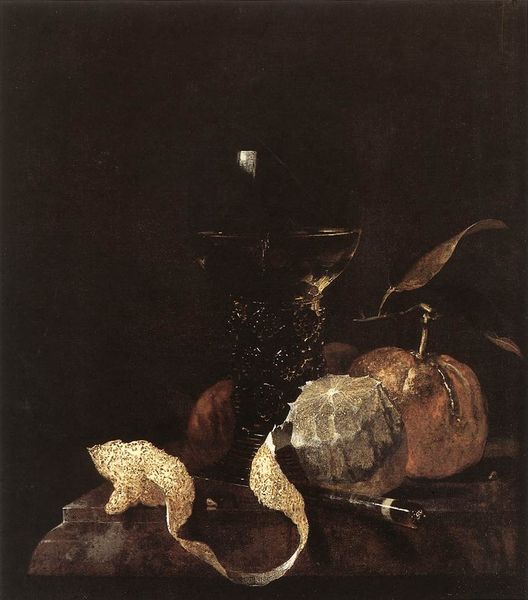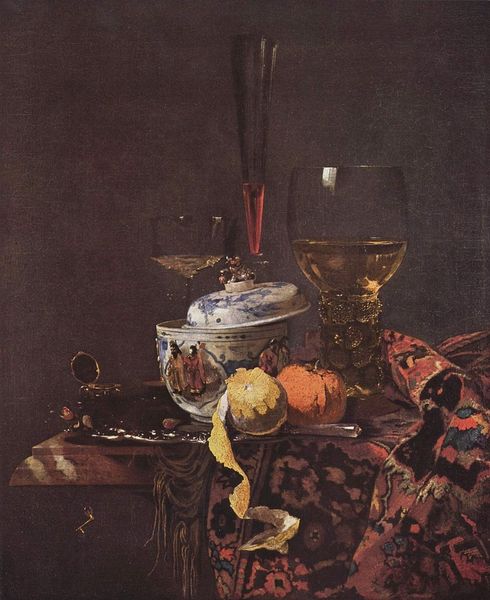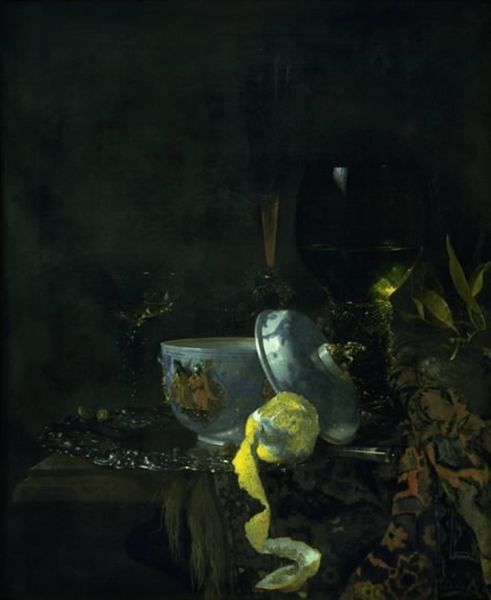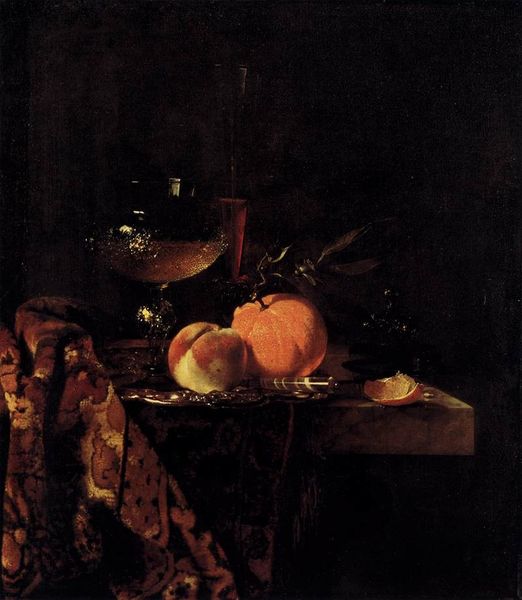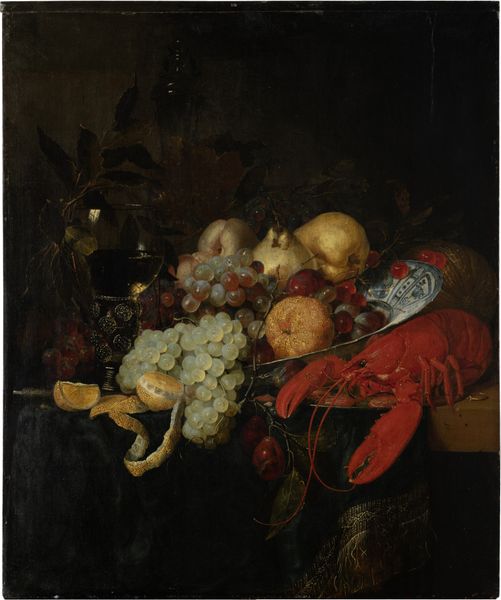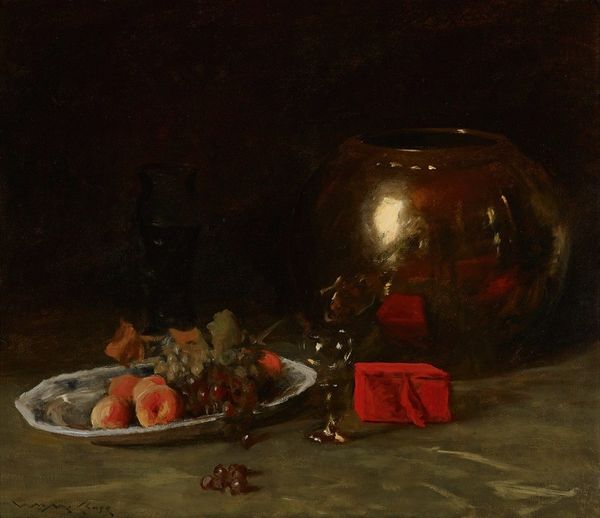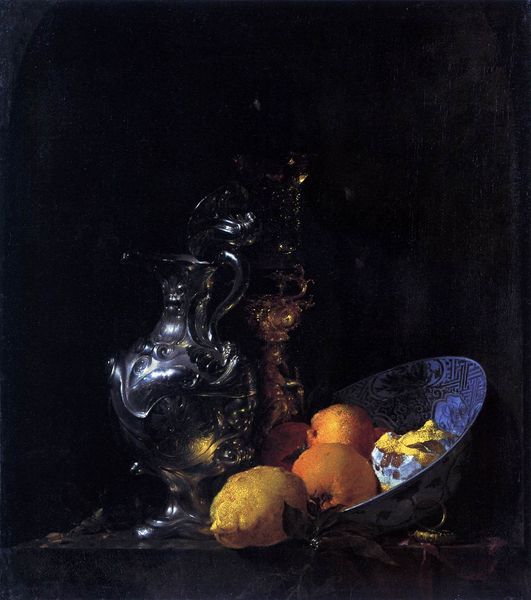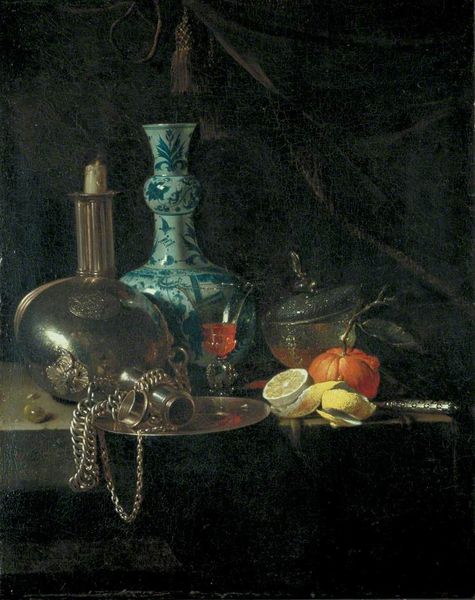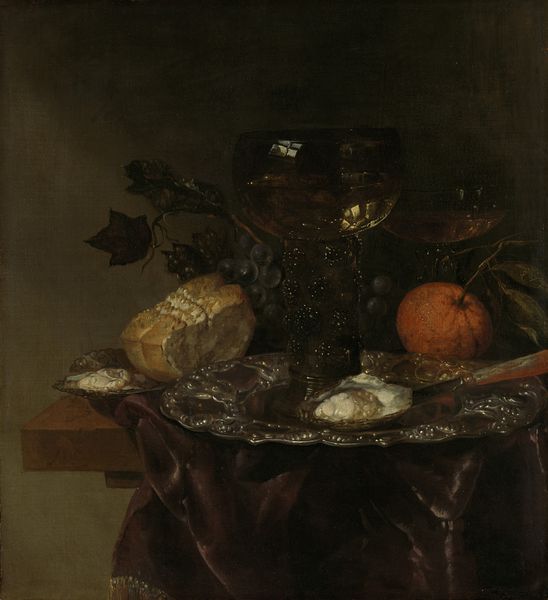
painting, oil-paint
#
baroque
#
dutch-golden-age
#
painting
#
oil-paint
#
vanitas
#
orientalism
#
chiaroscuro
Copyright: Public domain
Curator: This is Willem Kalf's "Still-Life with Chinese Porcelain Bowl," painted in 1662. The piece exemplifies the Dutch Golden Age mastery of light and detail, but also speaks to broader issues of global trade. Editor: Ooh, it's moody, isn’t it? Like a secret whispered in the dark. All that black, then these pops of vibrant color – it's like a stage, and the fruit and porcelain are the actors in some silent drama. Curator: Absolutely. The chiaroscuro, that strong contrast between light and dark, wasn't just for show. Kalf used it to draw our eye to the exotic goods: the Chinese porcelain bowl, the shimmering textiles, and those… slightly menacing looking fruits. Editor: Menacing fruit! Yes! The peeled orange looks particularly…vulnerable. All its juicy innards on display. I love that the objects hint at far-off lands and fancy tastes, it speaks to trade routes, to cultural exchange... Curator: Precisely. But within that celebration, there's also a hint of "vanitas," reminding us that these treasures, these moments of luxury, are fleeting. That fruit will rot, the colors will fade, empires crumble… Editor: Oh, bleak, bleak! I’m totally picturing this whole set-up decaying. Still, the sheer skill on display here… like, look how he captured the light on that bowl. Magical. Almost makes you forget about the looming sense of doom. Curator: Or, perhaps, it heightens it. The painting exists in this tension: luxury and mortality, beauty and decay. And to bring a perspective to today's world: How are our consumer habits linked with historical power dynamics? Editor: Makes you think about what’s really lasting, doesn't it? Beautiful, thought-provoking—definitely lingers. Curator: Indeed, a picture speaking of historical echoes into contemporary dialogues on consumerism, cultural exchange and mortality.
Comments
No comments
Be the first to comment and join the conversation on the ultimate creative platform.
